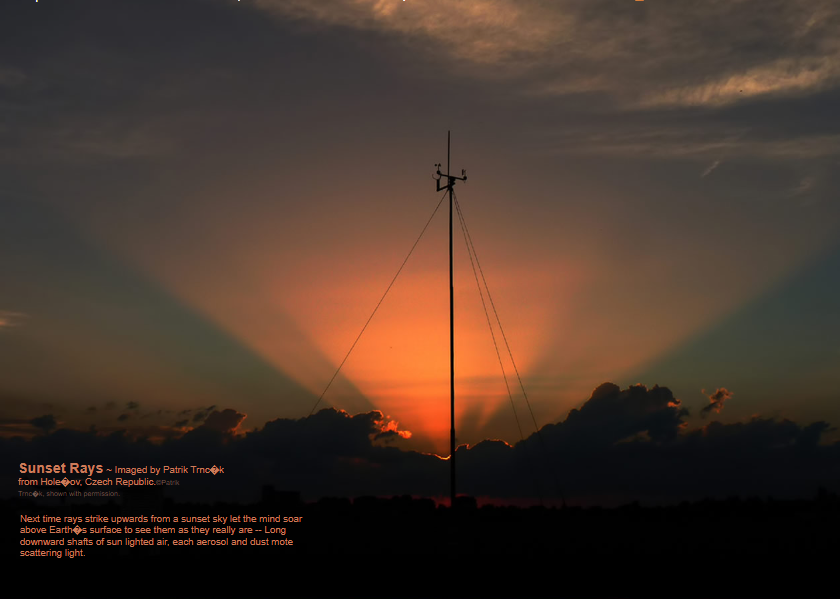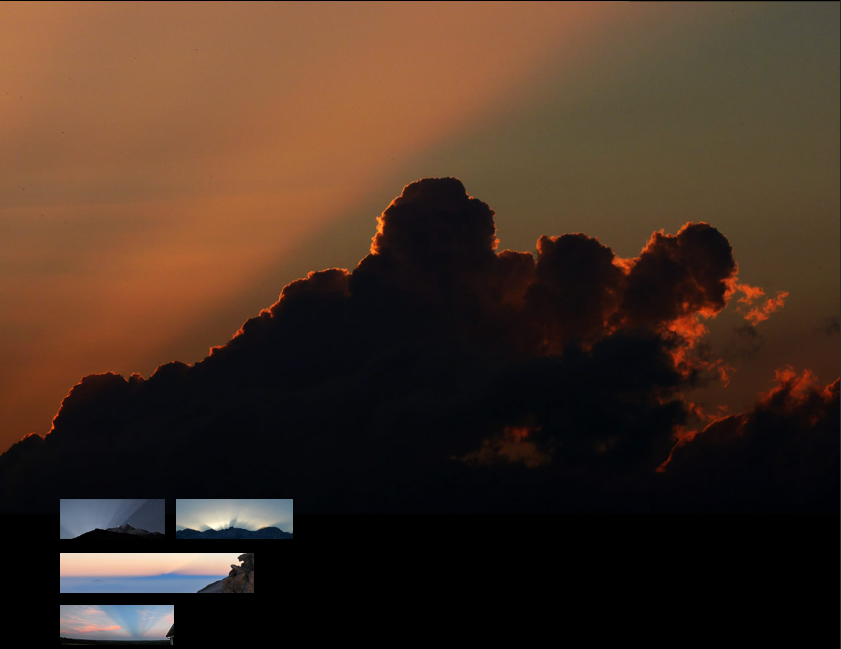OPOD - Sunset Rays
OPOD - Sunset Rays: A Spectacular Phenomenon Revealed
Have you ever gazed at the sky during a breathtaking sunset and noticed the mesmerizing rays of light piercing through the clouds? These ethereal beams, known as sunset rays, are a captivating atmospheric optics phenomenon that never fails to inspire wonder and awe. In this article, we will delve deeper into the science behind sunset rays, exploring their formation, characteristics, and the factors that contribute to their stunning display.
The Magic of Sunset Rays Unveiled
When the sun begins its descent towards the horizon, its light interacts with the Earth's atmosphere in a remarkable way. As sunlight passes through the atmosphere, it encounters various particles such as aerosols and dust motes. These minuscule particles scatter the light, causing it to disperse in different directions. However, the scattering is not uniform; instead, it occurs more prominently in certain directions.
The Birth of Long Downward Shafts of Light
As the scattered sunlight makes its way towards the Earth's surface, an extraordinary optical effect takes place. The rays of light become elongated, forming long downward shafts that seem to radiate from the setting sun. These elongated rays are what we commonly refer to as sunset rays. Each individual ray is a manifestation of the scattered sunlight interacting with the particles present in the atmosphere.
Unraveling the Factors Influencing Sunset Rays
Several factors contribute to the formation and appearance of sunset rays. Understanding these elements can help us appreciate this enchanting phenomenon even more:
-
Atmospheric Conditions: The presence of aerosols, dust, and other particles in the atmosphere significantly influences the scattering of sunlight and, consequently, the formation of sunset rays. A hazy or dusty atmosphere can intensify the effect, creating more distinct and pronounced rays.
-
Clouds: Clouds play a vital role in shaping the appearance of sunset rays. When the sun's rays pass through gaps or breaks in the clouds, they interact with the particles present in the atmosphere, resulting in the formation of well-defined beams of light.
-
Angle of the Sun: The angle at which the sun is positioned in the sky during sunset also impacts the appearance of sunset rays. As the sun descends towards the horizon, its light traverses a greater distance through the atmosphere, enhancing the scattering and creating longer, more prominent rays.
Capturing the Beauty of Sunset Rays
The allure of sunset rays has captivated photographers and sky enthusiasts for centuries. The interplay of light and atmosphere during this magical time offers a wealth of opportunities to capture stunning photographs. Here are some tips for photographing sunset rays:
-
Time of Day: Plan your photography session around the golden hour, which occurs shortly before sunset or after sunrise. During this time, the angle of the sun creates a soft, warm glow, enhancing the beauty of the rays.
-
Composition: Consider incorporating elements such as silhouettes, trees, or buildings into your composition to add depth and interest to your photographs. Experiment with different angles and perspectives to capture the full magnificence of the rays.
-
Filters and Settings: Experiment with different filters, such as polarizing filters, to enhance the contrast and saturation of the colors. Adjust your camera settings to optimize exposure and focus, ensuring that the rays are captured in all their glory.
The Fascinating World of Atmospheric Optics
Sunset rays are just one captivating example of the wonders that can be found within atmospheric optics. From rainbows and halos to mirages and iridescence, our atmosphere holds a treasure trove of optical phenomena waiting to be discovered and admired. Exploring these phenomena not only deepens our understanding of the natural world but also invites us to marvel at the beauty and complexity of our surroundings.
So, the next time you find yourself gazing at a stunning sunset, take a moment to appreciate the intricate dance of light and particles that gives rise to the enchanting display of sunset rays. Allow yourself to be captivated by the magic of atmospheric optics, where science and beauty intertwine to create a truly awe-inspiring spectacle.

Sunset Rays ~ Imaged by Patrik Trnc�k from Hole�ov, Czech Republic.©Patrik Trnc�k, shown with permission.
Next time rays strike upwards from a sunset sky let the mind soar above Earth�s surface to see them as they really are -- Long downward shafts of sun lighted air, each aerosol and dust mote scattering light.

Note: this article has been automatically converted from the old site and may not appear as intended. You can find the original article here.
Reference Atmospheric Optics
If you use any of the definitions, information, or data presented on Atmospheric Optics, please copy the link or reference below to properly credit us as the reference source. Thank you!
-
<a href="https://atoptics.co.uk/blog/opod-sunset-rays/">OPOD - Sunset Rays</a>
-
"OPOD - Sunset Rays". Atmospheric Optics. Accessed on November 26, 2024. https://atoptics.co.uk/blog/opod-sunset-rays/.
-
"OPOD - Sunset Rays". Atmospheric Optics, https://atoptics.co.uk/blog/opod-sunset-rays/. Accessed 26 November, 2024
-
OPOD - Sunset Rays. Atmospheric Optics. Retrieved from https://atoptics.co.uk/blog/opod-sunset-rays/.